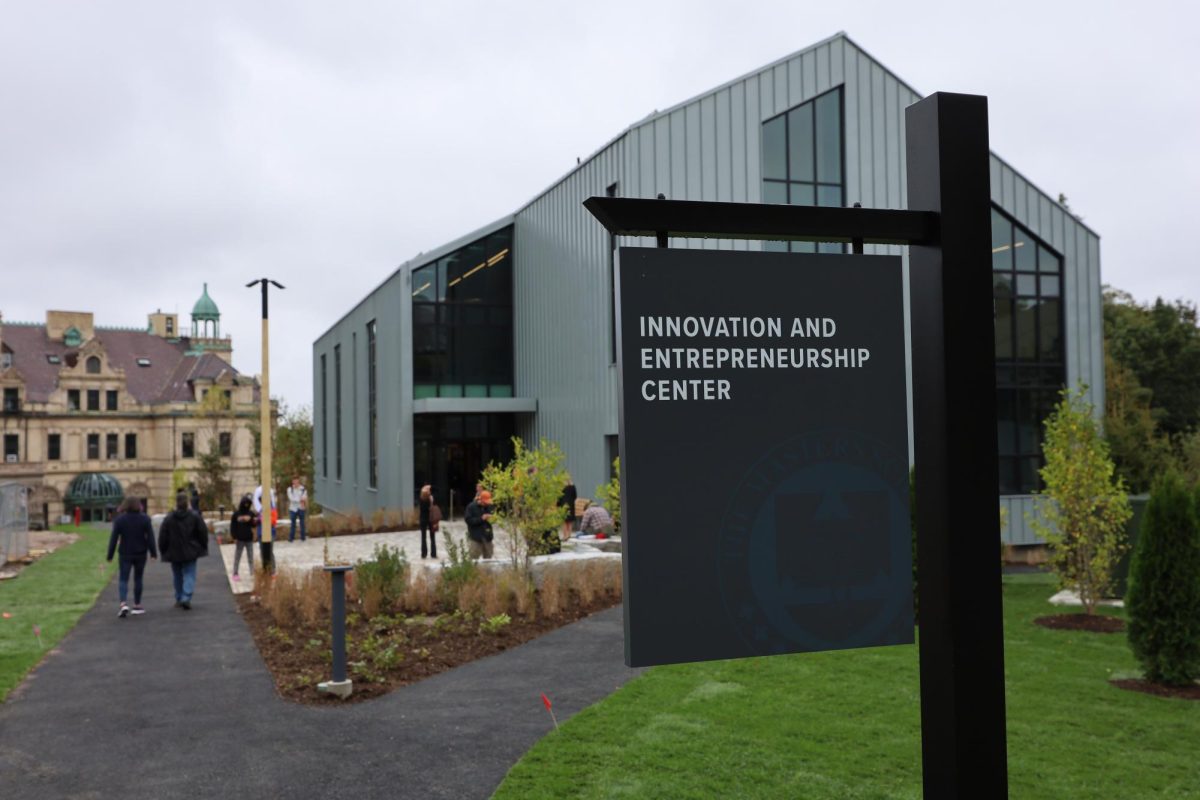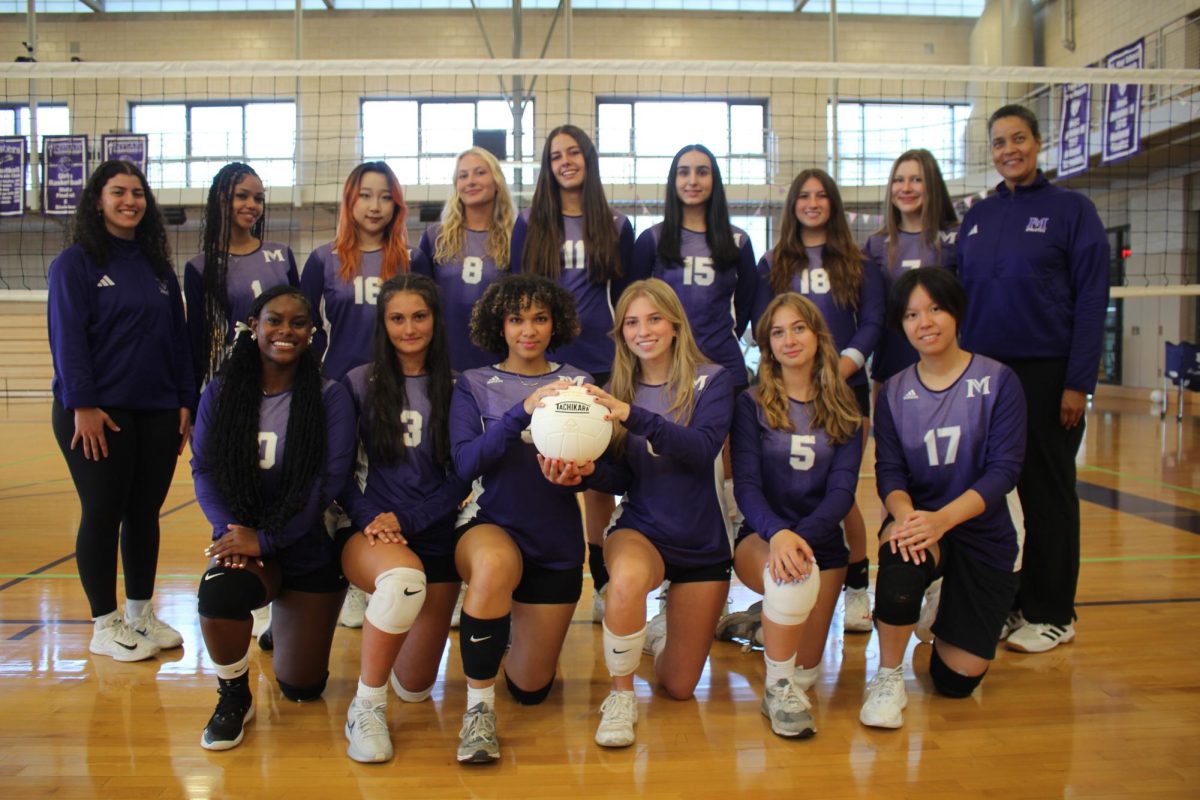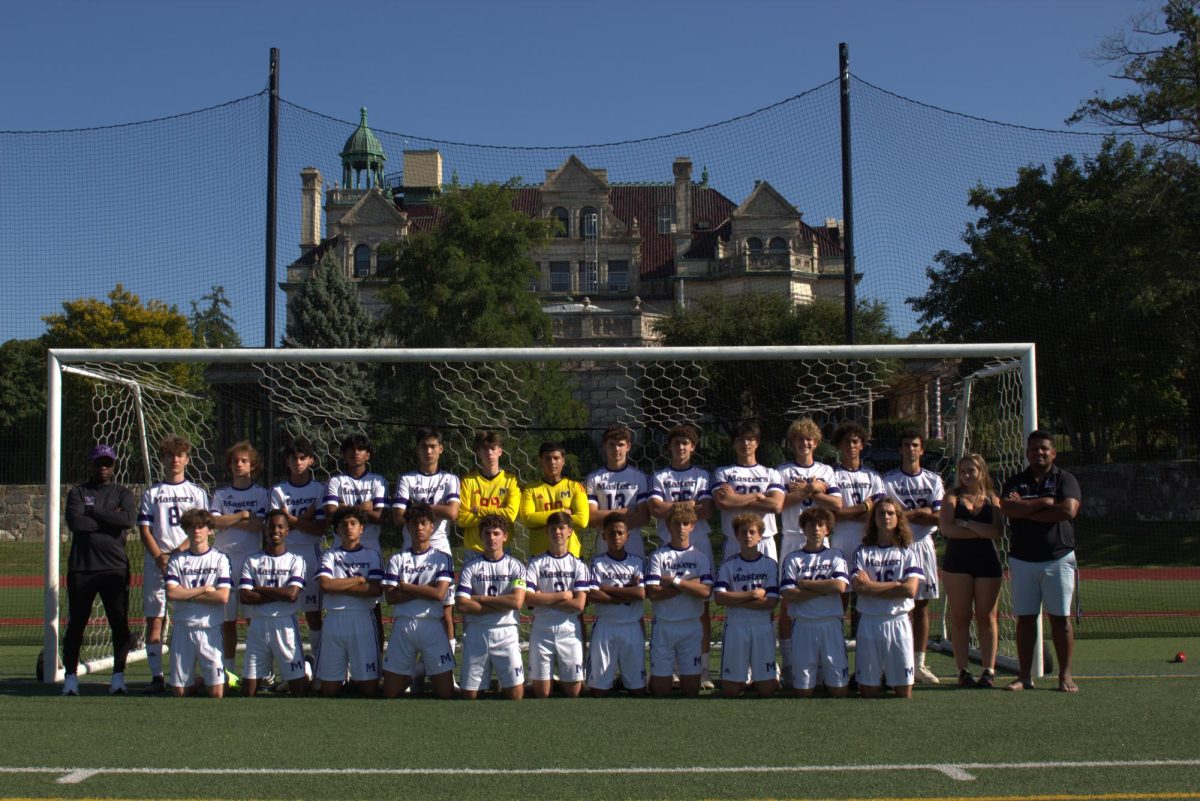Customizing club merchandise, designing and executing dance uniforms with a computerized sewing machine and spray painting objects are just a few examples of projects Masters students can create at the new IEC building. All-student access to high-tech gadgets will be available to students with the construction popping up on the former Evans Field where students played softball.
The Innovation, Engineering and Computer Science department calls the bustling Cameron Mann Dining Hall its home – for now. This space limits what students can produce in IEC classes, as a main concern is the program’s spatial constraint.
Sophomore and engineering student, Rebecca Troy, elaborated, “Right now I feel like it’s [the IEC program] almost an afterthought. We have a couple of classes which are great, however, they’re not really a priority.”
Keeping in line with Masters’ mission statement, the IEC is in place to teach students how to be powers for good in the world. The new building has had a jump in construction over the past few months, and – according to Seth Marx and Laura Danforth – hoped to open to students next fall.
Logan Dundas, freshman and member of the engineering, drawing and design course, detailed, “I think it’s [the building] going to make the robotics team and the cybersecurity team much more mainstream.”
According to the Director of Innovation, Engineering and Computer Science, John Chiodo, the gadgets will be available to all students and faculty, and are encouraged to be for interdisciplinary and inter-division use. Consequently, the machinery and makerspaces that serve as academic resources will be available to anybody excited to learn.
“I think there’s also an opportunity for people in any department to use something like 3D printing to their advantage. Like a history teacher could print a replica of a monument that they’re studying to show the class hands on, or a student who’s working on a project for a class could work with an IEC student to design an app or a web page,” Rae Johnson, Middle School IEC teacher, said.
While the IEC building will supply the Masters campus with ample equipment for advancement, Laura Danforth, Head of School, has made it a goal to provide the wider community with the same opportunity. Danforth explained that once the Masters team of students and faculty attain knowledge and proficiency with the novel construction, there is a target for an outreach program.
“I want to be able to find a way to invite students from the Bronx or Yonkers or Ossining. Somewhere where kids don’t have access to buildings like this and to programs like this to come in…where one Saturday morning a month, our IEC students are mentoring younger kids that are coming in and really having access to this building. I think that’s really important in helping them [underprivileged youth] be entrepreneurs.”
As the IEC program strives to educate the next generation of environmentally-conscious individuals, the construction itself is also “green.”
The Associate Head of School for Institutional Advancement, Seth Marx, said, “This building achieves a very high standard of carbon net zero. And that’s the broad combination of efficient systems, and connectivity to the green power grid.”
“Put simply, net zero means cutting greenhouse gas emissions to as close to zero as possible,” according to the United Nations, “with any remaining emissions re-absorbed from the atmosphere, by oceans and forests for instance.”
However, its bones aren’t the only attachment to nature that the building can boast. According to Marx, students can expect workspaces on the exterior, as well as an outdoor Harkness garden and bioretention center to recollect rainwater.
Marx said, “You as students can feel really proud of the way that your school has approached this because it will be beautiful, it will be innovative, and it will also be reflective, I think, of our values as a school and as a community.”





